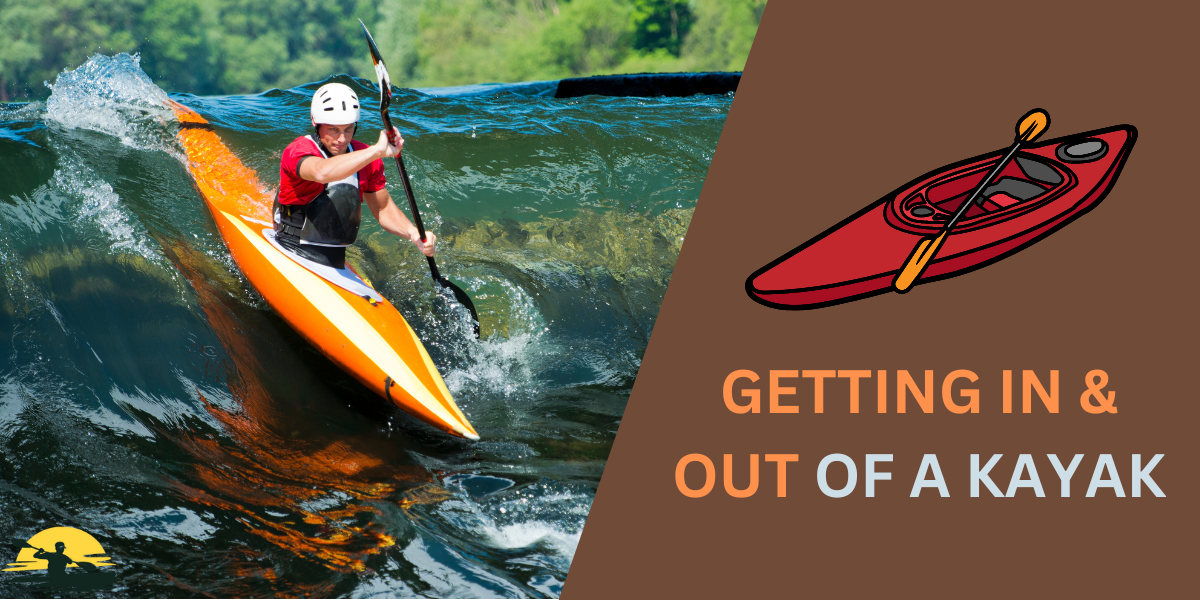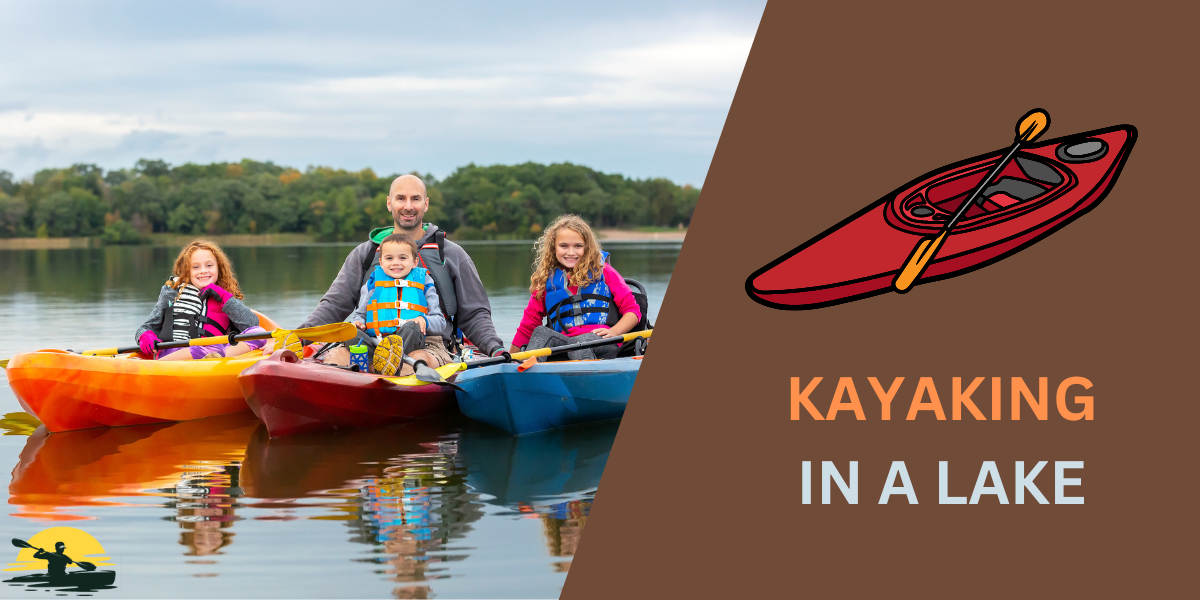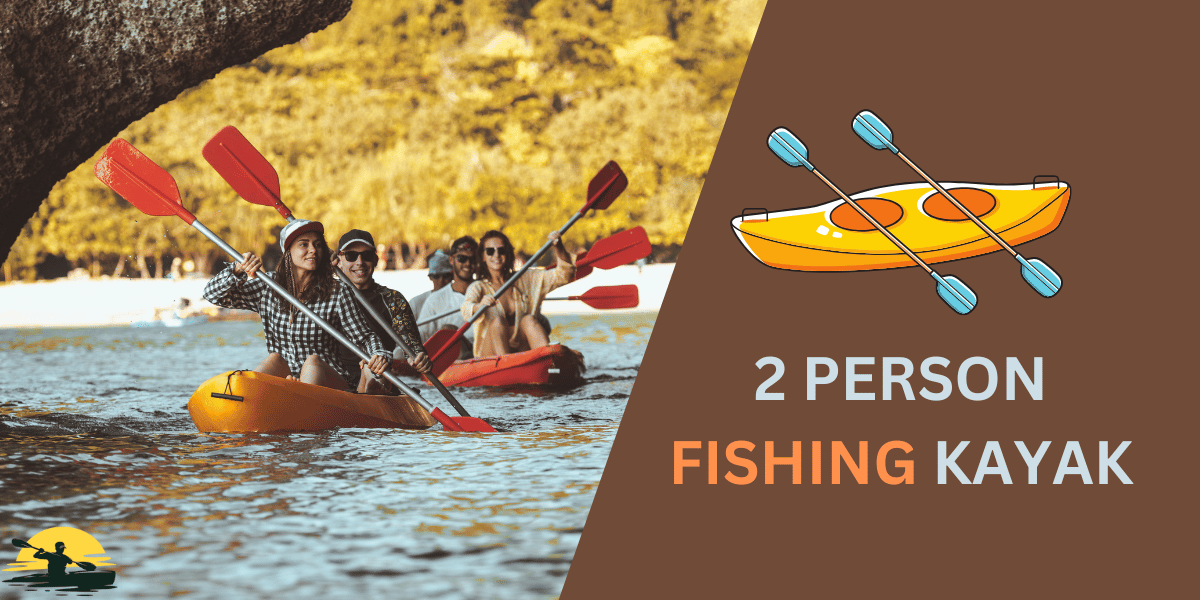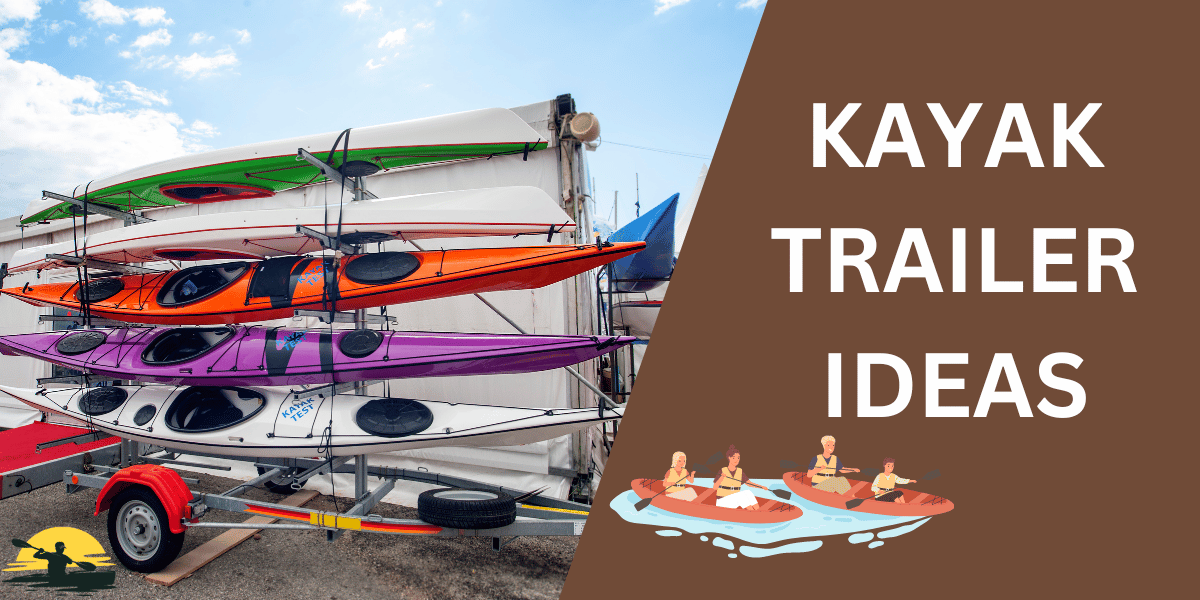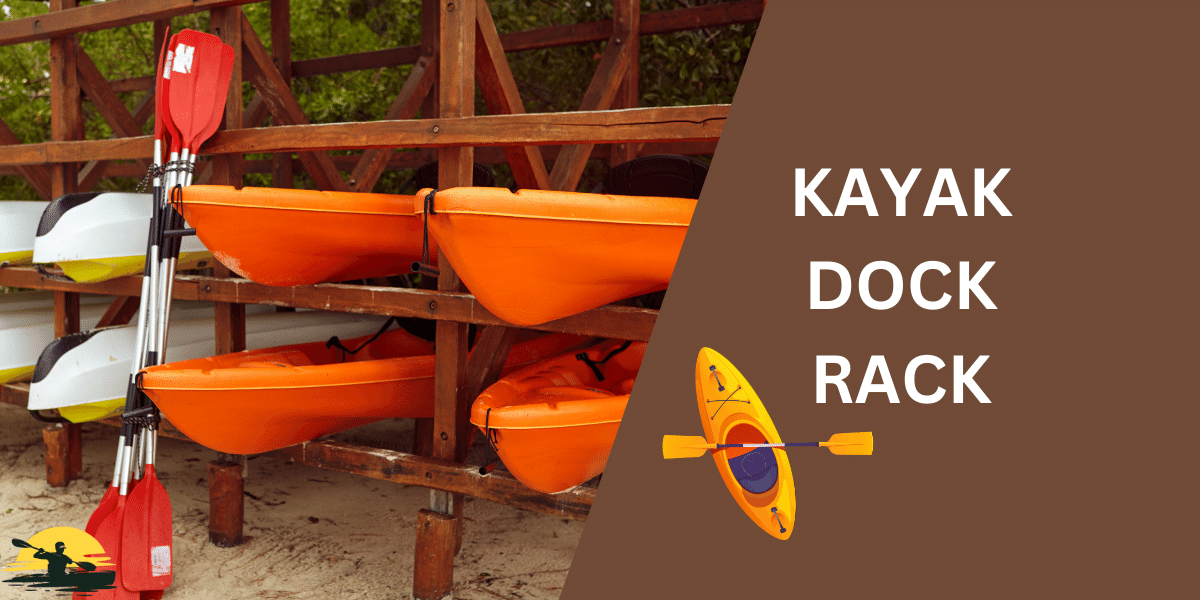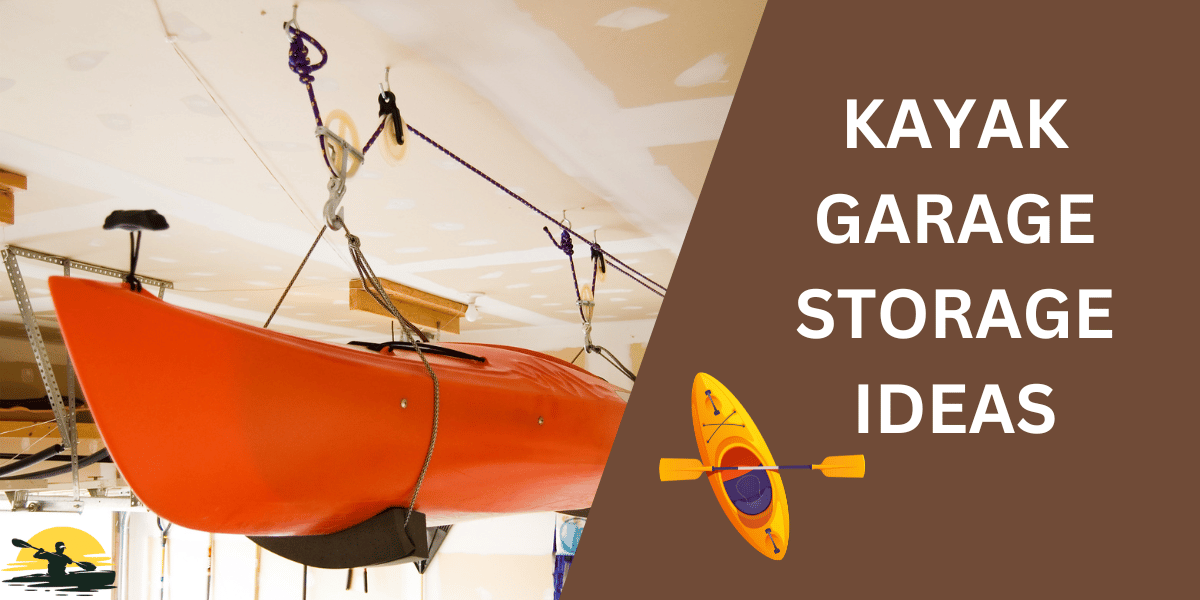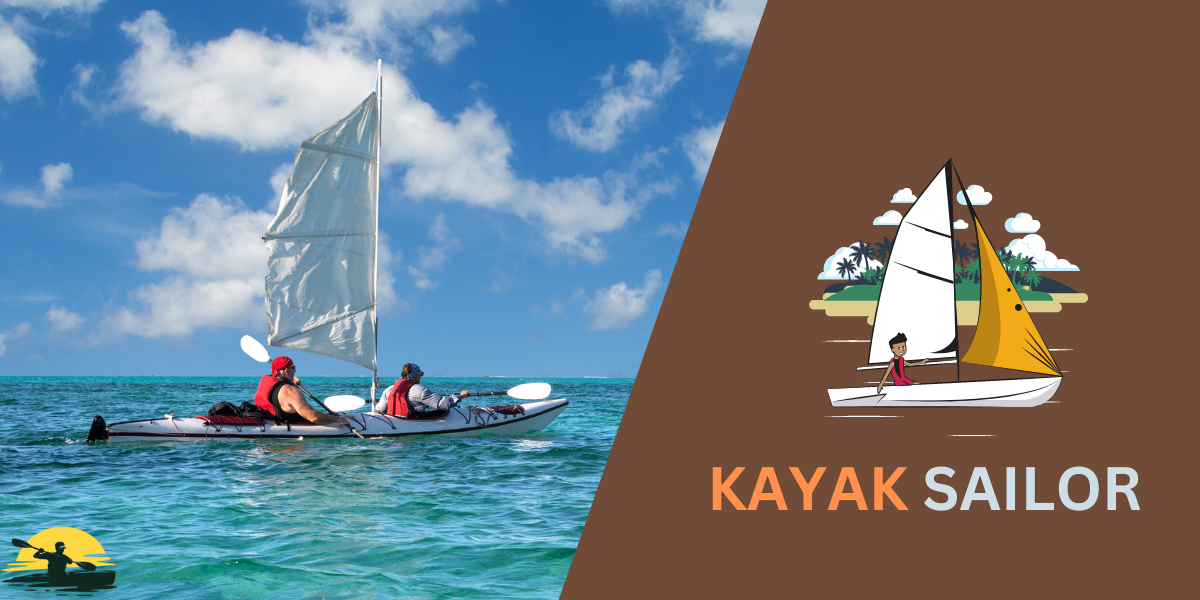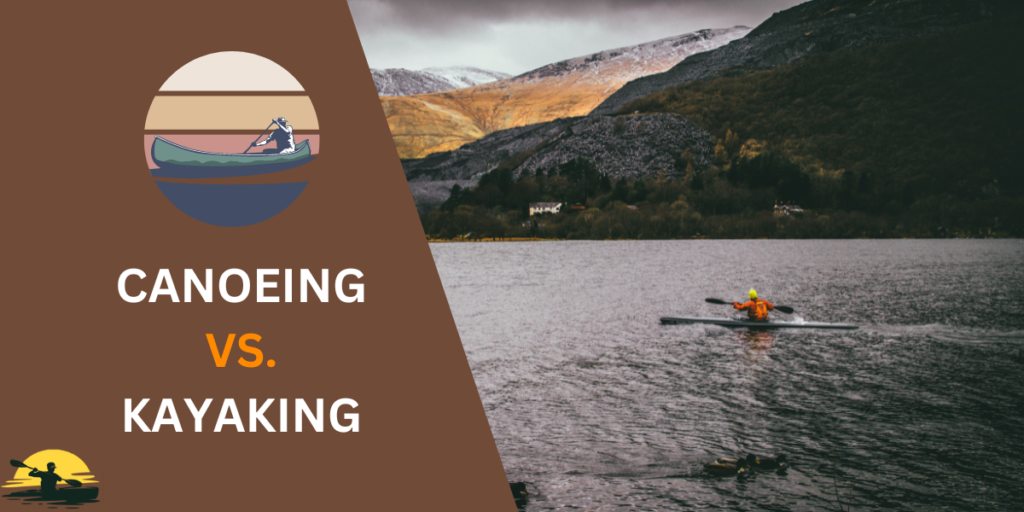
Ever stared at a lake wondering, ‘Canoe or kayak?’ You’re not alone
With tons of options – touring kayaks, recreational kayaks, sit-on-top, sit-inside – plus canoes, it’s tough to choose. And what about paddles? Single blade for canoes, double blade for kayaks… Ugh!
This guide simplifies everything! We’ll compare canoes and kayaks, different paddling styles, and what each one is best at. Whether you want to tackle whitewater or chill, we’ve got the answers.
Canoeing vs. Kayaking
- Design: Canoes are open and spacious, and kayaks have enclosed cockpits.
- Stability: Canoes are generally more stable than kayaks.
- Maneuverability: Kayaks are more agile and easier to turn than canoes.
- Speed: Kayaks tend to be faster than canoes.
- Capacity: Canoes can typically carry more people and gear than kayaks.
- Paddling: Canoes use single-bladed paddles, kayaks use double-bladed paddles.
- Learning Curve: Kayaks are often considered easier to learn for beginners.
- Best For Canoes are great for families, fishing, and leisurely paddling. Kayaks are ideal for solo adventures, exploring, and whitewater.
What Sets Them Apart?
When you see people out on the water, paddling along, you might wonder, “Are they in a canoe or a kayak?”
Both are fun ways to explore rivers, lakes, and even the ocean, but some key differences help you tell them apart and decide which one might be right for you.

Canoes: Picture an open boat, like a wide bathtub. You either sit on a bench or kneel, and you use a single-bladed paddle to move yourself through the water. Canoes are wider than kayaks, so they’re more stable and can carry more gear or people. They come in different styles, too:
- Recreational canoes: Perfect for a leisurely paddle on a calm lake with friends or family.
- Touring canoes: Built for longer trips, these have more storage space for camping gear and supplies.
- Whitewater canoes: Tough and designed to handle rough water and rapids.
Kayaks: Think of a kayak as a sleeker, more enclosed boat. You sit inside a cockpit with your legs stretched out in front of you, using a double-bladed paddle to propel yourself forward. Kayaks are generally faster and easier to maneuver than canoes, making them great for exploring tight spaces or covering more distance. There are a few different types of kayaks, too:
- Sit-inside kayaks: These are the classic kayaks where you sit inside the hull with a spray skirt to keep water out.
- Sit-on-top kayaks: A good option for warmer weather, these have an open deck so you can easily get on and off.
- Touring kayaks: Made for longer trips, these kayaks have more storage space and are designed for efficiency.
- Sea kayaks: Built for open water and long distances, these kayaks are often longer and narrower.
- Whitewater kayaks: Small and agile, these kayaks are designed to handle rough water and rapids.
No matter which one you choose, both canoes and kayaks are lightweight boats that offer a fun and exciting way to experience the outdoors and get a good workout.
The paddling techniques are a little different for each, but with a bit of practice, you’ll be gliding across the water in no time!
Comfort & Design – What’s the Right Fit?

Let’s discuss how canoes and kayaks are designed and what that means for you out on the water.
Each one has a unique style and features that impact comfort, how much gear you can bring, and where you might want to take it.
Canoes: As we mentioned, canoes have an open design. This means there’s plenty of space to stretch your legs, move around, or even bring a furry friend along. If you’re planning a camping trip or want to get a lot of stuff, canoes are awesome because they have lots of room for storage.
- Open design: Lets you enjoy sunshine and fresh air, making it easy to get in and out.
- Roomy interior: Plenty of space to move, perfect for families or groups.
- Great for storage: You can carry lots of gear, coolers, and even camping supplies.
Kayaks: Kayaks have a closed deck, so it’s like you’re sitting inside the boat. This can make them feel cozier and more connected to the water, especially if you’re in a sit-inside kayak. Some kayaks have hatches or storage areas where you can stash gear, but they generally have less space than a canoe.
- Closed deck: Protects you from splashes and helps keep you warm in cooler weather.
- Cockpit seating: It feels secure and connected to the boat, and it is good for rougher water.
- Streamlined design: Makes kayaks faster and easier to maneuver.
What Do You Think About Comfort?
- Canoes: Tend to be more comfortable for long trips or if you have trouble sitting with your legs straight out. You can even kneel or sit on the bottom of the canoe to change positions.
- Kayaks: They can be comfy, too, but it depends on the design and how well the seat fits you. Some people find the kayak’s cockpit more supportive, while others prefer the open space of a canoe.
Where Can You Take Them?

Both canoes and kayaks are great for exploring calm waters like lakes and slow-moving rivers.
But there are some differences when it comes to tackling more adventurous environments:
- Whitewater: Kayaks, especially those designed for whitewater, are the preferred choice here. They’re elegant and easier to maneuver through rapids. If you flip a kayak in whitewater, you can learn a technique called an “Eskimo roll” to get yourself upright again.
- Open water: Sea kayaks are built for handling waves and wind, making them a good choice for coastal paddling or exploring larger lakes.
Which One’s Easier to Learn?
Kayaking requires a different paddling technique than canoeing, but most people find it easier to pick up.
Canoeing can be a bit more challenging because of the single-blade paddle and the need for coordination if you’re paddling with someone else.
Ultimately, the best way to decide between a canoe and a kayak is to try them both out and see what feels right for you!
Paddling Difference: Strokes & Skills

Now that we’ve covered the boats themselves let’s talk about how you actually make them move!
Paddling a canoe and paddling a kayak feel pretty different. The techniques, what it’s like to learn, and even how many people you paddle with can vary.
Canoe Paddling: In a canoe, you use a single-bladed paddle on either side of the boat. The basic stroke is called a “J-stroke,” which helps keep the canoe going straight. If you’re paddling with a friend, you’ll need to work together to coordinate your strokes and steer. Canoeing can be a bit trickier to learn than kayaking, but it’s a great way to bond with a paddling partner and enjoy a relaxed pace.
- Single-blade paddle: Requires switching sides and using a special stroke (the J-stroke) to go straight.
- Coordination: This is important for tandem paddling; you need to work together to steer.
- Slower pace: Not as fast as kayaking, but offers a more relaxed and social experience.

Kayak Paddling: Kayaks use a double-bladed paddle, which means you’re always pulling on one side and pushing on the other. The basic stroke is a forward stroke, and there are different strokes for turning and maneuvering. Kayaking is generally considered easier to learn because you don’t have to switch sides as often, and it’s easier to go straight.
- Double-blade paddle: Offers more power and efficiency than a single-blade paddle.
- Easier to learn: Most people find it easier to pick up the basics of kayaking.
- Faster pace: Kayaks are generally faster than canoes, which is great for covering distance.
Learning Curve: If you’re a beginner, most people find it easier to learn kayaking first. It’s simpler to get the hang of the basic strokes and feel comfortable in the boat. But don’t be discouraged from trying canoeing! It might take a bit more practice, but it’s a rewarding experience.
Solo vs. Tandem
- Canoes: Traditionally designed for two people, but you can paddle them solo, too. It’s more challenging but doable!
- Kayaks: Most kayaks are designed for one person, but tandem kayaks are available if you want to paddle with a friend or family member.
Which is Better?
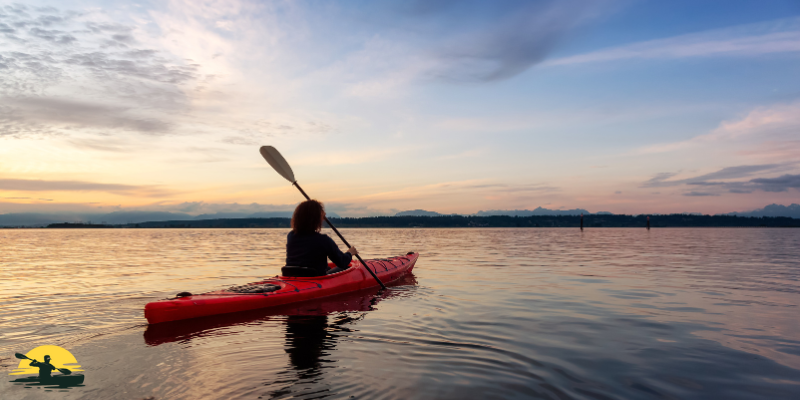
It depends on what you’re looking for!
A canoe might be the best option if you want a more social experience, lots of space, and a stable platform.
If you want a faster, more independent experience and are willing to endure a bit more of a learning curve, kayaking might be a better fit.
Where Canoes & Kayaks Shine
Alright, so we’ve covered how canoes and kayaks are built and how to paddle them.
But what kinds of adventures are they best suited for? Let’s dive in and explore the different ways you can use these awesome boats!
Fishing
- Kayaks: Many fishing kayaks have special features like rod holders and even pedal-powered systems that let you fish hands-free. Sit-on-top kayaks are especially popular for fishing because you can easily hop on and off to cast your line.
- Canoes: If you want more space to move around, bring a cooler, or maybe even try stand-up fishing, a canoe is a great choice. They’re super stable, so you don’t have to worry about tipping over while you’re reeling in the big one.
Relaxing on Calm Waters

- Both! Canoes and kayaks are perfect for lazy days on lakes, ponds, or slow-moving rivers. It really comes down to personal preference. Canoes offer more space to spread out, while kayaks give you that close-to-the-water feeling.
Whitewater Thrills
- Kayaks: If you’re into adrenaline rushes and tackling rapids, whitewater kayaks are the way to go. They’re designed to handle rough water and give you the agility to maneuver through tricky currents.
- Canoes: While whitewater canoes exist, they’re less common than kayaks for this type of paddling. Canoes can still be fun on milder rapids, but they might not be the best choice for extreme whitewater adventures.
Touring & Exploring
- Kayak Touring Kayaks: These kayaks are built for longer trips and have more storage space than recreational kayaks. They’re also designed for efficiency so that you can cover more distance with less effort.
- Canoes: If you’re planning a multi-day trip and want to bring a lot of gear, a canoe is a great option. They have way more space than kayaks, so you can pack everything you need for a comfortable adventure.
Paddling with Family & Friends
- Canoes: Want to bring the kids, the dog, or even grandma along for the ride? A canoe is the perfect choice for group outings. There’s plenty of room for everyone, plus gear, snacks, and whatever else you need for a fun day on the water.
- Tandem Kayaks: These kayaks have two cockpits so that you can paddle with a friend or family member. They can be a lot of fun, but they require good communication and coordination.
Remember: No matter what kind of paddling you’re interested in, there’s a canoe or kayak out there that’s perfect for you!
Making Your Choice

So, how do you decide between a canoe and a kayak?
It all comes down to what kind of paddling you want to do, who you’ll be paddling with, and what feels right for you.
What’s Your Paddling Style?
- Relaxed and Social: If you enjoy leisurely paddles with friends or family, a canoe might be a better fit. Its open design allows for easy conversation, and you can even bring a cooler or some snacks to share. Plus, a canoe’s stable platform makes it great for beginners or anyone who wants to feel extra secure on the water.
- Fast and Agile: If you’re looking for a bit more excitement or want to cover more distance, a kayak might be your speed. The streamlined shape and double-bladed paddle make kayaks faster and easier to maneuver. You can explore tight spaces, navigate winding rivers, or even take on some gentle rapids.
- Fishing Enthusiast: Both canoes and kayaks are great for fishing, but certain types might be better suited to your style. Sit-on-top kayaks offer easy access to the water and have plenty of space for gear, while canoes provide a stable platform for casting and reeling in your catch.
- Adventure Seeker: If you dream of multi-day expeditions or tackling challenging whitewater, a sea kayak or whitewater kayak might be the way to go. These specialized kayaks are designed for specific conditions and can handle rough water with ease.
- Family Fun: Canoes are the ultimate family-friendly boat! With plenty of space for kids, pets, and gear, they’re perfect for group outings. Plus, the open design makes it easy to keep an eye on everyone and enjoy quality time together.

Comfort & Ease of Use
- Seating Position: Think about how you like to sit when you’re out on the water. Canoes offer more flexibility with different seating positions, while kayaks have a fixed cockpit seat.
- Getting In & Out: Canoes are generally easier to get in and out of, especially for people with limited mobility. Kayaks can be a bit trickier, especially if you’re in a sit-inside model.
Storage Space
- Canoes: If you’re planning a longer trip or need to carry lots of gear, a canoe is the clear winner in terms of storage space.
- Kayaks: Kayaks have limited storage space, but some models come with hatches or bungee cords to secure your belongings.

Learning Curve
- Kayaks: Most people find it easier to learn the basics of kayaking because the paddling motion is more intuitive.
- Canoes: Canoeing can take a bit more practice to master the J-stroke and coordinate your strokes with a partner.
A Few Final Thoughts
- Consider your budget: Canoes are generally less expensive than kayaks.
- Think about transportation and storage: Canoes are larger and might require a roof rack or trailer for transport.
- Try before you buy: Many rental shops offer both canoes and kayaks, so you can try them out before making a decision.

Ultimately, the best way to choose between a canoe and a kayak is to follow your heart and pick the one that excites you the most.
With so many options available, you’re sure to find the perfect boat to create your unforgettable adventures on the water!
Conclusion
So, there you have it! We’ve taken a deep dive into the world of canoes and kayaks, exploring how they’re made, how to paddle them, and the adventures they open up.
Whether you’re drawn to the open space of a canoe or the sporty feel of a kayak, both offer incredible ways to experience the water.
Canoes are awesome for lazy days with the family, fishing with friends, or hauling gear on longer trips. Kayaks are perfect for solo exploring, navigating winding rivers, or tackling whitewater.
There’s no one-size-fits-all answer when it comes to choosing between these two. The best boat for you depends on your style and what kind of paddling you want to do.

So, don’t be afraid to try both! Rent, borrow, or tag along with a friend who already has one. The more you paddle, the more you’ll discover what you truly enjoy.
The most important thing is to get out there and have fun on the water. Happy paddling!
Frequently Asked Questions
Which is easier to learn, canoeing or kayaking?
Most people find kayaking easier to pick up initially. The double-bladed paddle and seated position make it simpler to go in a straight line and maneuver. Canoeing, with its single-blade paddle and different strokes, can take a bit more practice. It’s worth noting that sit-on-top kayaks canoes are often considered the easiest for beginners due to their stability and open cockpit design.
Is a canoe or kayak better for beginners?
If you’re a beginner, a sit-on-top kayak might be a great starting point. They’re stable, easy to get in and out of, and generally less tippy than canoes. Recreational canoes are also good for beginners, especially if you’re paddling with a partner who can help with steering and paddling techniques.
Which is better for fishing, a canoe or a kayak?
Both can be great for fishing! Kayaks, particularly sit-on-top models, are often favored for their maneuverability and specialized features like rod holders. Canoes, however, offer more space, which can be helpful for bringing along additional gear or even another person.
Can I take my entire family on a canoe or kayak trip?
Absolutely! Canoes are particularly well-suited for families as they offer more space for multiple people, gear, and even pets. Tandem kayaks can also be a fun option for pairs or small families who want to paddle together.
Are kayaks faster than canoes?
In general, kayaks tend to be faster than canoes due to their streamlined design and the use of a double-bladed paddle. However, the speed of both vessels depends on various factors, including the paddler’s skill, the type of boat (e.g., touring kayak vs. recreational canoe style), and the water conditions (e.g., calm lake vs. whitewater rapids).


